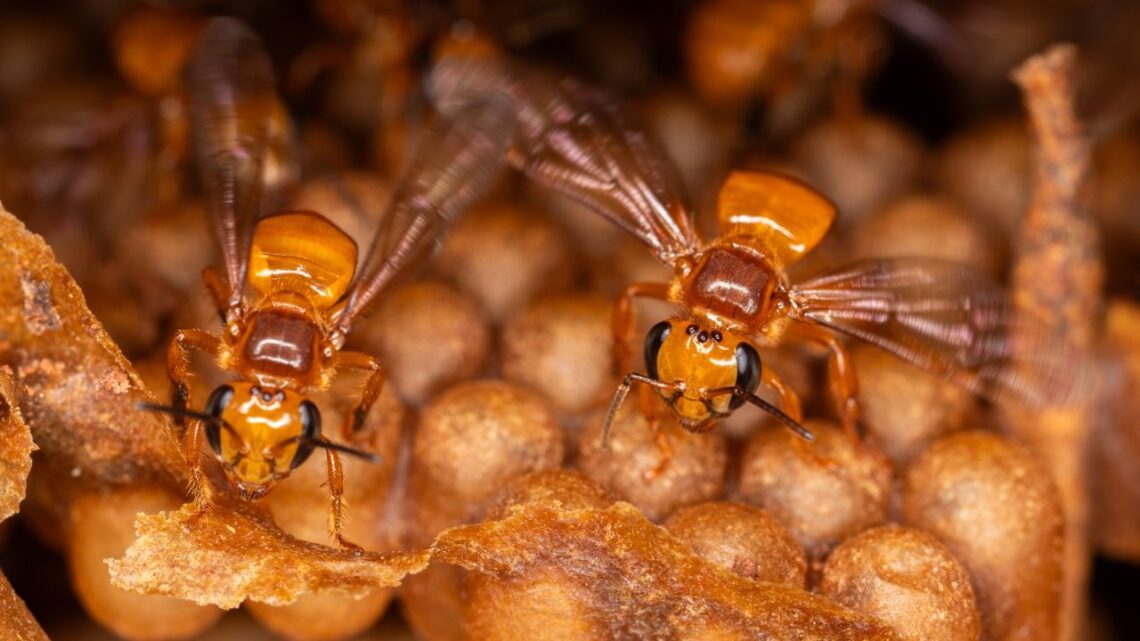Stingless bees—those native to the Amazon and classified in the tribe Meliponini—play a crucial role in the rainforest ecosystem.
They help pollinate native trees, medicinal plants, and crops essential to Indigenous communities. In the Peruvian Amazon, these native bees are closely tied to the cultural and ecological fabric of forest life.
What’s New in Protection Efforts
In recent years, Peru has taken landmark steps to protect its native stingless bees.
Laws and declarations now explicitly recognize these bees, their habitats, and their role in ecological health and Indigenous livelihoods.
Conservation efforts are increasingly combining scientific research, traditional Indigenous knowledge, and legal rights frameworks to ensure these bees are not just protected, but their ecosystems are restored and valued.
Habitat and Ecological Role
The Peruvian Amazon features a tremendous diversity of ecosystems—from lowland rainforest to montane forest—providing rich habitat for native stingless bees.
These bees often reside in tree cavities or hollow logs, and they are highly sensitive to changes in forest condition.
They are often regarded as indicators of forest health because when their populations shrink, it signals deeper ecological stress.
Key Facts & Figures
| Indicator | Value / Estimate | Significance |
|---|---|---|
| Approximate pollination contribution | 38 % to 90 % of wild plant species in Amazon-type ecosystems | Shows stingless bees’ central role in rainforest biodiversity. |
| Habitat loss (Peruvian Amazon) | Large numbers of hectares lost annually through deforestation and mining | Puts native bee populations at risk through habitat fragmentation. |
| Traditional knowledge & use | Many Indigenous groups use stingless bee honey for medicine, food, and cultural uses | Highlights the cultural importance of bee conservation. |
| Scale of formal meliponiculture (stingless-bee beekeeping) in Peru | Very limited compared to Brazil or Mexico | Indicates opportunity to grow sustainable livelihoods linked to bee protection. |
Threats Facing the Bees
- Deforestation and habitat fragmentation reduce available nesting sites and reduce forest plant diversity, thereby reducing forage and brood-site availability for stingless bees.
- Unsustainable honey harvesting: Many wild nests are destroyed when accessible honey is removed with little regard for colony survival, killing the hive and erasing future productivity.
- Lack of institutional support: Traditional beekeeping of native stingless bees (meliponiculture) remains small scale. Many communities lack training, access to markets, or policy support.
- Forest degradation: Mining, illegal logging, and pesticide use degrade the forests on which these bees depend.
- Cultural erosion: As younger generations move away from traditional practices, knowledge of native stingless bee management and forest-connected customs declines.
Community-Led Solutions in Action
- Meliponiculture: Some Indigenous and rural communities are beginning to adopt hive-box systems for stingless bees, enabling productive, non-destructive honey extraction while preserving bee populations.
- Legal recognition: By granting rights to native stingless bees and their habitat, Peru is creating tools to prosecute harmful practices, protect habitat, and require restoration when damage occurs.
- Forest restoration & agroforestry: Integrating native bee-friendly plants, trees and forest patches into buffer zones and agroforestry systems supports bee populations and local livelihoods.
- Traditional knowledge integration: Working with Indigenous groups ensures that conservation practices fit the culture, knowledge systems, and economic realities of forest-dwelling peoples.
How You Can Help
- Support honey and bee-products from certified, sustainable native-bee-keeping initiatives rather than wild-nest destruction.
- Promote or advocate for forest-conservation policies that recognise the importance of pollinators like native stingless bees.
- Encourage educational outreach about the importance of native bees in ecosystems, especially in regions like the Peruvian Amazon.
- If visiting or working in the region, support community-led projects rather than extractive tourism or unsustainable harvesting of forest resources.
The native stingless bees of the Peruvian Amazon are unsung heroes of forest regeneration, biodiversity and cultural heritage.
To protect them is to protect the rainforest, the communities that depend on it, and the cycles of life that hold it all together.
Through legal protection, community-led beekeeping, forest restoration and traditional-knowledge revival, Peru is charting a path that shows how safeguarding a small insect can yield big benefits—for nature, culture and climate resilience.
